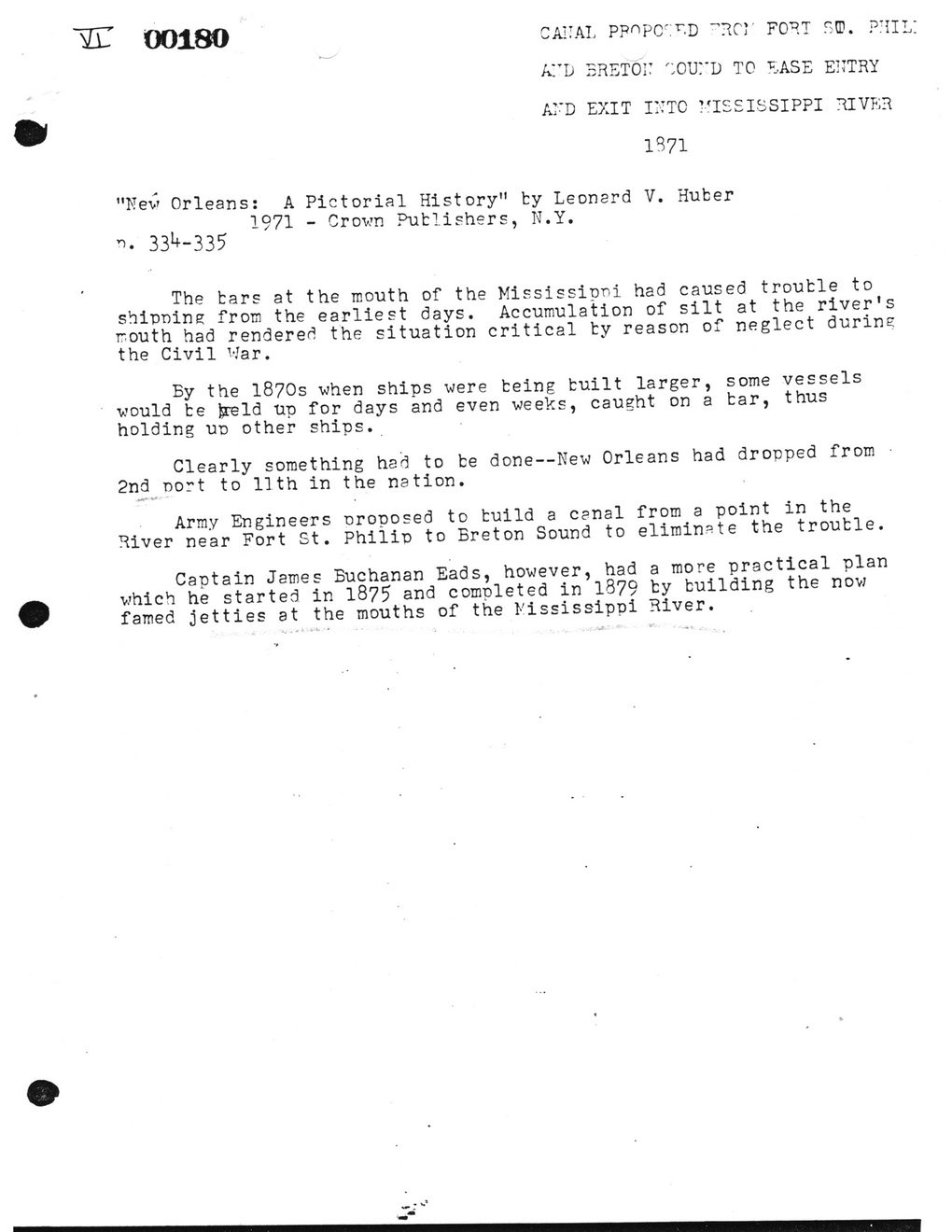This text was obtained via automated optical character recognition.
It has not been edited and may therefore contain several errors.
YZ 00180 CANAL PP°PCr'r.D ■’RCL FORT 5 ID. PHI and bretoi: ';ound to ease entry and exit into Mississippi river 1571 "New Orleans: A Pictorial History" by Leonard V. Huber 1971 - Crown Publishers, N.Y. 33^-335 The bars at the mouth of the Mississippi had caused trouble to shipping from the earliest days. Accumulation of silt at the river’s routh had rendered the situation critical by reason of neglect durine the Civil War. By the 1870s when ships were being built larger, some vessels would be fcreld up for days and even weeks, caught on a bar, thus holding up other ships. Clearly something had to be done—New Orleans had dropped from 2nd port to 11th in the nation. Army Engineers proposed to build a canal from a point in the River near Fort St. Philip to Breton Sound to eliminate the trouble. Captain James Buchanan Eads, however, had a more practical plan which he started in 1875 and completed in 1879 by building the now famed jetties at the mouths of the t-'ississippi River.

New Orleans and Louisiana Document (057)